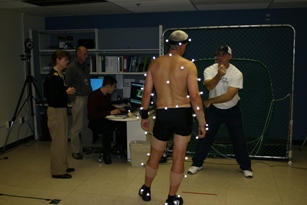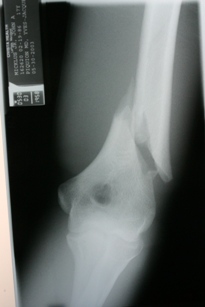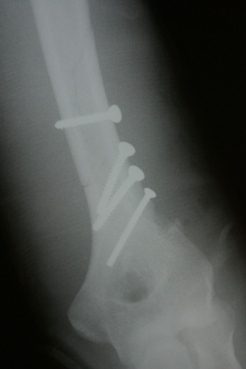Teaching how not to pitch
Twenty or thirty years ago, most pitchers in youth baseball were not being taught how to pitch correctly. Rather, they were taught how not to pitch; what some coach suspected they were doing wrong (I say, "suspected," because few coaches took the time to learn how to teach pitching).
Unfortunately, not too much has changed.
Instead of trying to identify the reasons so many young pitchers are injuring their throwing elbows and shoulders, the focus has been on the symptoms of the problem and implementing guesswork measures in that hopes that one might work.
To me, it makes a whole lot more sense to first figure out what the problem is and then come up with solutions to fix that problem. So, for the last 20 years or so, I have been preaching and teaching a different approach to pitching, one designed to prevent pitching injuries from occurring in the first place by teaching proper pitching mechanics.
Fact versus opinion

Even in today's youth baseball there are still many well intentioned "pitching coaches" whose only qualification for the job is that they themselves pitched at some time in the past. They remember they were sometimes successful and sometimes not, but most never knew why.
If your child is a pitcher, the most important thing for him to know is the relationship between cause and effect that explains why some pitchers succeed, and why some fail, why some get injured, and some don't. The only way to do that is through video analysis. It shows you "WHY!"
Pitchers are smart. They are drawn to the position by their intellect as well as their athleticism. Today's pitchers learn quickly if you can provide them with reasonable (the ability to reason) information.
Just as any other kinetic motion, pitching has numerous components which can be broken down into teachable parts. Pitchers need patience, persistence and video analysis to truly learn what is currently happening. Coaches need a plan.
Then why don't all coaches use video analysis to teach? Video exposes ignorance and incompetence. You really have to know your stuff to analyze video, you can't fake it. The reviewer must know about current research and historical patterns, and constantly be sensitive to communication techniques that inform, instruct, and inspire a student and his family in a positive manner. It is all about information retention values. For a very long time, the staff at the Pinkman Baseball Academy and I have reviewed 1500 to 2000 videos a year.
Stopping the madness
Chances are, though, unless your child has trained with a teaching professional or coach who has learned the biomechanics of pitching in the last 10 years, what he is likely to be taught is probably going to be based, not on scientific fact and research, but on the coach's personal opinion about the flaws in his pitching mechanics. Teaching professionals and great coaches are always willing and eager to answer the question, "what have you read lately?"
The sad truth is that, despite the amazing advances in computer technology and medicine, the younger the pitcher, the more likely they will fail to develop their pitching skills and risk injury as a result of coaching ignorance, negligence, or competitive greed!
Just one recent example proves my point. During the third week of March 2010, after three record snowfalls in February and weeks of rain, I received a call from an emotional parent. The dad told us that his 12-year-old son threw 39 pitches the previous Saturday and 120 pitches the next day. Why? It was a tournament!
This is the type of coaching insanity that has to stop. Whether ignorance or abuse, it simply has to stop. A 12-year-old throwing that many pitches in mid-June would be very wrong and harmful to the child; that he did so at the beginning of the season in March was sheer madness. He was just a kid. But his team really, really needed to win that early March tournament!
Need proof? Well, then, consider the fact that during that same weekend at the Washington Nationals' spring training camp, Seven Strasburg, then a rookie who reached 100 miles per hour on the radar gun, had a forty pitch count limit! He threw 27 pitches in two innings, then went to the bull pen to throw the final 13.
As a professional pitcher, Strasburg benefits from the best medical and strength training money can buy. After all, the team knows it has significant investment in the young man and, naturally, it wants not only to protect that investment but get a return. Strasburg was paid $1.8 million that year, but went on the disabled list after two major league starts, and in his third start back from the DL in August 2010, tore his ulnar collateral ligament, requiring Tommy John surgery and 18 months of rehab. The likely cause of the injury, as a recent ESPN: The Magazine article discusses in depth, was Strasberg's poor pitching mechanics (arm lag and improper sequencing), which put his shoulder and elbow under extra stress; flaws which have not been corrected and lead some biomechanical experts to believe that Strasburg, who has yet to make it through a full major league season, never will.
Still not convinced? How about some before and after photos? Here are photos sent by a college coach of one of our students after the surgery. The picture on the left is the result of years of improper to bizarre mechanics; but he was successful. I hope this puts to rest the tired Industrial Age quote, "if it ain't broke - don't fix it."


Arming parents
Parents must have greater expectations of coaches at all levels, period.
Yes, you can say I have seen it all, over several generations. This is why I am so passionate about teaching. One of the best ways to protect against arm injuries and maximize your child's natural ability is to teach proper pitching mechanics at as early an age as possible.
- Learn about pitching even if you aren't a coach. As a result, even if you aren't coaching your child's youth baseball or Little League team, learning the basic principles of pitching, as taught by the best instructors in the country, is a good idea.
- Learning about pitching mechanics doesn't need to be complicated. Teaching your child about pitching mechanics doesn't need to be complicated, and it doesn't need to be too technical.
- No shortcuts or quick fixes. You and your child do, however, have to be willing to commit enough time to understand the entire process, step by step. As I know from years of teaching pitching at my baseball academy, players who come expecting a "quick fix", who believe that we can wave a magic wand over their heads that will give them the ability to throw a one-hit shutout every time they take the mound almost always end up leaving disappointed.
Tail wags dog
For years youth baseball leagues around the country have asked me to teach pitching clinics. When I give them a proposal calling for six hours of instruction, the usual response I get is, "My God! We can't do that. The coaches won't stay that long! We have to keep it down to an hour, two at the most."
What they want is for the tail to wag the proverbial dog: They can't afford the time for education or actual learning; they want the warm and fuzzy appearance of training. The result, not surprisingly, is that their teams continue to lose in post season play and they scratch their heads and wonder why. They actually know why, of course, but they would rather complain about a lack of talent in the league and wait in the vain hope that a genetic wave of talent will pass through town.
The same is true at the high school level, where, pitching depth, as it is at all levels of baseball, is critical to success in post-season play. Players across the country tell me there is an unbelievable lack of instruction at both the pitcher and catcher positions in high school.
Throwing straight before throwing crooked
- Pitching is a sequence of events. The complete pitching motion is a sequence of events, with a very clear start, specific critical moments along the way, and a finite end. It is only as good as the weakest link in the chain.
- Mental preparation before pitch required. Before the pitcher even begins his pitching motion, he needs to be mentally prepared (since I'm focusing here on pitching mechanics, I'll leave that subject for another article).
- Throwing sequence same regardless of position. Regardless of whether your child is a pitcher or playing another position on the diamond, the throwing process involves an efficient transfer of energy during the throwing motion from the player's feet into the ball. A perfect throw is one in which all of the player's kinetic energy ends up being transferred to the ball. If any one part of that energy transfer system is less efficient than the others, the entire system, and velocity and accuracy suffer.
- All about body control and balance: Learning the pitching motion is primarily about body control, not about the arm. Balance will determine accuracy. Imagine holding a hose with running water. Pinch any section - at the faucet, in the middle, or just before the nozzle. The same result will occur - less water will come out the end.
- Accuracy, not velocity. The goal is not velocity. It is accuracy. Nothing is as boring in sports as watching a youngster walk 5 batters in a row. This is precisely why I became a pitching coach 20 years ago. I wanted to do something in baseball that would have the greatest impact. Teaching children to throw straight is where I began. You can do it too! Whether you call it location or "command", there is a simple truth that you learn after training thousands of pitchers under the pressure of competition: they will never throw the ball as fast as possible if they don't know where it will end up. If they hit the lady in the concession stand ("Just a bit outside"), I guarantee the next pitch will be slower!
Wind up or stretch: no difference
First, let's start with debunking a myth. Professional teachers know that it makes no difference if pitchers throw from the wind up or the stretch. It makes no difference in velocity. Indeed, if anything, youngsters may end up throwing harder from the stretch because the better location they achieve by pitching from the stretch will give them the confidence they need to throw harder.
Because the biomechanics of pitching from the windup are more complicated, there is less room for error in pitching from the stretch (more movement, more problems). That is why we teach young players to ONLY throw from the stretch (less movement, less problems).
Children learning to pitch are influenced by a variety of sources: TV, old movies and cartoons. They mimic the pitching motion. They want to be a pro. It's fun to imagine.
Unfortunately, years of pitching with poor mechanics have a cumulative effect and add up to too many 14-year-olds in pain; the medical term is repetitive micro trauma. The pain is definitely not fun - but very predictable!








